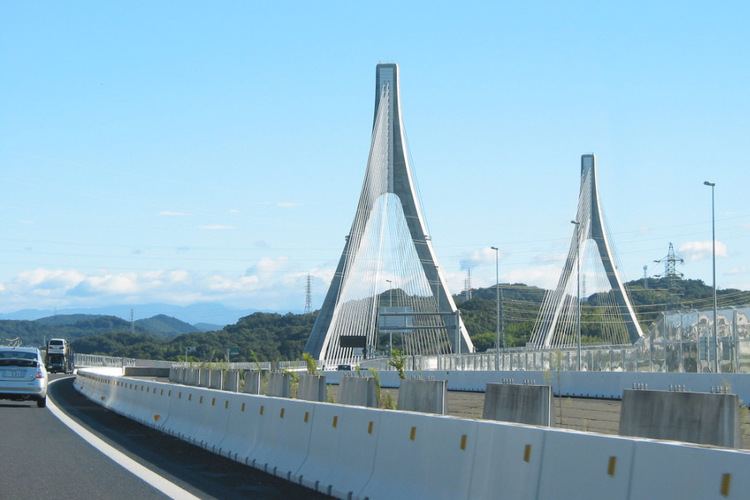Existed: 1985 – present Constructed 1985 | Length 56.4 km | |
 | ||
To: Yokkaichi-kita Junction in Yokkaichi, Mie Shinmeishin Expressway Tōkai-Kanjō Expressway | ||
The Isewangan Expressway (伊勢湾岸自動車道, Isewangan Jidōshadō) is a national expressway in the Tōkai region of Japan. It is owned and operated by Central Nippon Expressway Company.
Contents
Map of Isewangan Expressway, Japan
Naming
The route primarily follows the north shore of Ise Bay (wangan means bayshore in Japanese).
Officially, the route has 3 designations. The section from Toyota-higashi Junction to Tōkai Junction is referred to as part of the Second Tōkai Expressway. The section from Tōkai Junction to Tobishima Interchange is referred to as part of National Route 302. This section is not classified as a national expressway but rather as a national highway for motor vehicles only with national expressway concurrency (高速自動車国道に並行する一般国道自動車専用道路, Kōsoku Jidōsha Kokudō ni Heikōsuru Ippan Kokudō Jidōsha Senyō Dōro). There is no difference in the design standard of this section compared with the rest of the expressway. Finally, the section from Tobishima Interchange to Yokkaichi-kita Junction is referred to as part of the Kinki Expressway Nagoya Kobe Route.
Overview
The Isewangan is planned to link the future New Tōmei Expressway to the east and Shinmeishin Expressway to the west. These 3 expressways will replace the Tōmei Expressway and Meishin Expressway as the primary roadway linking Tokyo, Nagoya, and Osaka.
The first segment (Meikō-Chūō Interchange to Tobishima Interchange) was opened in 1985 as the Isewangan Road and the most recent addition was opened in 2005. The final segment (Yokkaichi Junction to Yokkaichi-kita Junction) is planned to connect with extensions to the Shinmeishin Expressway and Tōkai-Kanjō Expressway. The route is 6 lanes for its entire length.
The expressway features several impressive bridges. Three bridges span the Nagoya Port area (collectively known as the Meikō Triton) and two bridges span the Kiso River and Ibi River (collectively known as the Twinkle Bridges).
